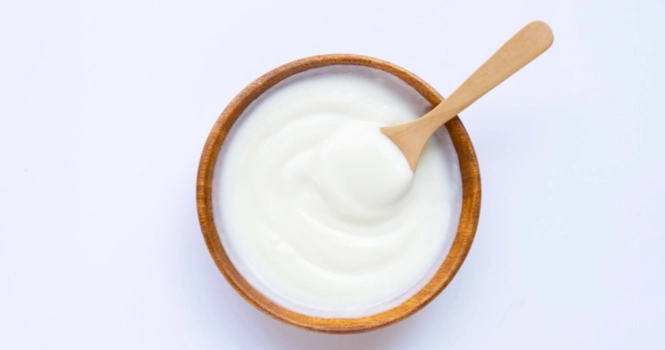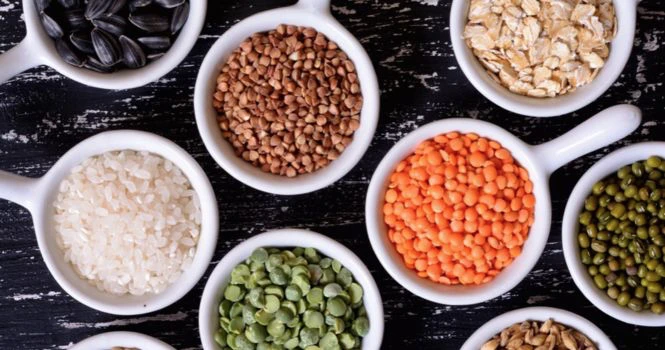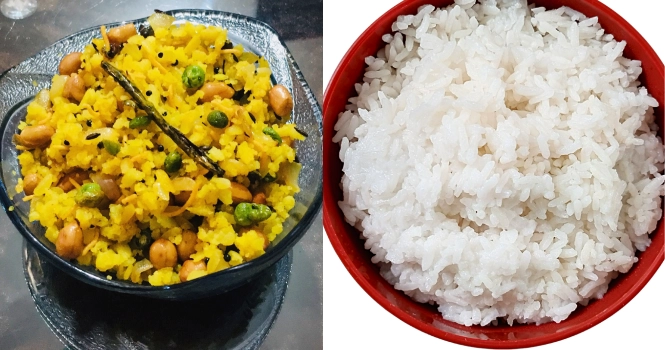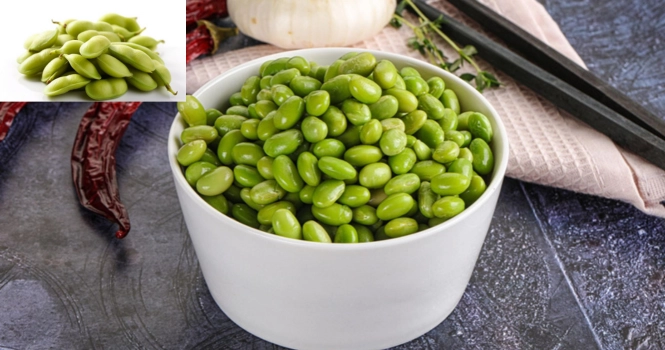Calories and Nutrition in Curd: A Comprehensive Guide to Its Healthful Impact

Curd, essential in various cuisines, offers more than just flavor – it’s a nutritional powerhouse. By examining its role in overall health, we highlight curd’s importance in a balanced diet and its ability to boost physical and digestive well-being, emphasising on Calories in Curd and its Nutrition.
What is Curd?
Curd, often known as yogurt in some parts of the world, is a dairy product made by fermenting milk. This process involves adding beneficial bacteria (like Lactobacillus) to milk, which then convert the lactose (milk sugar) into lactic acid.
This acidification gives curd its distinctive tangy taste and thick texture. Rich in essential nutrients like calcium, protein, and vitamins, curd is also known for its probiotic properties, promoting gut health and aiding digestion.
It’s a versatile food, used in various culinary traditions both as a standalone dish and as an ingredient in cooking.
Nutrition Facts In 1 Cup Curd ( 245 grams)
| Nutrient | Amount |
| Calories | 154 kcal |
| Total Fat | 3.8 g |
| Saturated Fat | 2.5 g |
| Cholesterol | 15 mg |
| Sodium | 172 mg |
| Total Carbohydrates | 17 g |
| Dietary Fiber | 0 g |
| Sugars | 17 g |
| Protein | 13 g |
| Calcium | 450 mg |
| Vitamin D | Variable* |
*The Vitamin D content in curd can vary depending on whether it has been fortified or not.
Note: these values are approximate and can vary based on the specific type and brand of curd. For the most accurate information, it’s always best to check the nutrition label of the specific product you’re using.
Calories in 1 Cup Curd
The calorie content in 1 cup of curd (yogurt) varies depending on the type (full-fat, low-fat, non-fat) and any additional ingredients like sweeteners or fruit. Here’s a general breakdown:
- 1 cup of plain, full-fat curd: Approximately 150 to 160 calories.
- 1 cup of low-fat curd: Around 100 to 150 calories.
- 1 cup of non-fat or fat-free curd: Usually between 90 to 110 calories.
These values are approximations and can vary based on the specific brand and product.
Calories in 100g Curds
The calorie content in 100 grams of curd (yogurt) can vary based on whether it’s full-fat, low-fat, or non-fat. Here’s a general estimation:
- Full-fat curd: About 60-100 calories.
- Low-fat curd: Roughly 45-70 calories.
- Non-fat or fat-free curd: Usually around 35-50 calories.
These values are approximate and can differ depending on the brand and specific product.
Lemon curd nutrition
Lemon curd is a dessert spread made primarily from lemon, sugar, butter, and eggs.
| Nutrient | Amount |
| Calories | 290-300 kcal |
| Total Fat | 10-15 g |
| Saturated Fat | 5-7 g |
| Cholesterol | 150-200 mg |
| Sodium | 100-150 mg |
| Total Carbohydrates | 50-55 g |
| Sugars | 40-45 g |
| Protein | 1-2 g |
| Vitamin C | Varies |
Cheese curd nutrition
Cheese curds are small chunks of curdled milk used in cheese-making, often eaten as a snack.
| Nutrient | Amount |
| Calories | 330-350 kcal |
| Total Fat | 25-28 g |
| Saturated Fat | 15-18 g |
| Cholesterol | 90-100 mg |
| Sodium | 600-800 mg |
| Total Carbohydrates | 3-4 g |
| Sugars | 1-2 g |
| Protein | 25-28 g |
| Calcium | 500-700 mg |
Bean curd nutrition
Bean curd, or tofu, is made from soy milk and is a popular protein source in vegetarian and vegan diets.
| Nutrient | Amount |
| Calories | 70-80 kcal |
| Total Fat | 4-5 g |
| Saturated Fat | 0.5-1 g |
| Cholesterol | 0 mg |
| Sodium | 7-15 mg |
| Total Carbohydrates | 1-2 g |
| Sugars | 0-1 g |
| Protein | 8-10 g |
| Calcium | 150-200 mg |
| Iron | 1.2-1.8 mg |
Health Benefits of Curds
Curd offers a multitude of health benefits, making it a valuable addition to a balanced diet. Here are some of its key health benefits:
1. Improves Digestive Health: Curd contains probiotics, beneficial bacteria that can aid in maintaining a healthy balance of gut flora. This can improve digestive health and help prevent issues like constipation and diarrhea.
2. Boosts Immunity: The probiotics in curd also play a role in strengthening the immune system. Regular consumption can help reduce the incidence of infections.
3. Rich in Nutrients: Curd is a good source of several essential nutrients, including calcium, vitamin B-12, potassium, phosphorus, and magnesium. These nutrients are vital for maintaining healthy bones, teeth, and overall bodily functions.
4. Promotes Heart Health: Consuming curd can help in lowering cholesterol levels and maintaining blood pressure, which are key factors in cardiovascular health.
5. Helps in Weight Management: The high protein content in curd can increase feelings of fullness, which can help in controlling appetite and aiding in weight management.
6. Beneficial for Bone Health: High in calcium and vitamin D (especially if fortified), curd is beneficial for maintaining bone density and strength, and can help prevent osteoporosis.
7. Supports Skin Health: Some studies suggest that the probiotics in curd can benefit skin health, potentially improving conditions like acne and eczema.
How to make curds at Home?
Making curd at home is a simple process that requires minimal ingredients and equipment. Here’s a basic method to prepare it:
Ingredients
- Milk (1 liter) – You can use full-fat, low-fat, or non-fat milk depending on your preference.
- Curd starter (1-2 tablespoons) – This is a small amount of pre-existing curd used to introduce the necessary bacteria.
Things required
- A heavy-bottomed pot
- A spoon
- A container for setting the curd
Instructions
1. Boil the Milk: Pour the milk into the heavy-bottomed pot and slowly bring it to a boil over medium heat. Stir occasionally to prevent the milk from scalding at the bottom.
2. Cool the Milk: Once the milk has boiled, remove it from the heat and let it cool down to a warm temperature. It should be warm to the touch but not hot (about 110°F or 45°C).
3. Add Curd Starter: Add 1-2 tablespoons of curd starter to the container you’ll be using to set the curd.
4. Mix Milk with Curd Starter: Once the milk has cooled to the right temperature, pour it into the container with the curd starter. Mix gently to ensure the starter is evenly distributed throughout the milk.
5. Set the Curd: Cover the container and set it aside in a warm place for the curd to ferment. The time it takes to set will depend on the temperature of the environment. Generally, it takes about 6-8 hours in warm weather and up to 12 hours or more in colder conditions.
6. Check the Curd: After the setting time, check to see if the curd is firm. If it’s set, the curd will be thick and have a slight tang.
7. Refrigerate: Once set, transfer the curd to the refrigerator to stop further souring. It’s best consumed within 1-2 days.
Tips
- The quality of your starter curd significantly affects the final product. Use fresh, good-quality curd as a starter.
- Avoid disturbing or moving the container while the curd is setting.
- The process might require a bit of trial and error initially, especially in adjusting the setting time according to your local climate.
Homemade curd is delicious, healthy, and devoid of preservatives and artificial thickeners found in some commercial varieties.
How to set curds without any curds at Home?
Setting curd without any pre-existing curd as a starter can be a bit challenging, but it’s not impossible. You can use alternative methods to introduce the necessary bacteria for fermentation. Here are a couple of methods:
Method 1: Using Lemon Juice or Vinegar
This method relies on acidifying the milk to mimic the curdling process.
- Boil Milk: Bring the milk to a boil and then let it cool down to a warm temperature (about 110°F or 45°C).
- Add Acid: Add 1-2 tablespoons of lemon juice or vinegar to the warm milk and stir gently.
- Set the Curd: Pour the milk into a container, cover it, and keep it in a warm place for about 6-8 hours or until it sets.
Method 2: Using Chili Stems
This is a traditional method where the stems of green chilies are used to introduce the necessary bacteria.
- Boil Milk: Boil the milk and allow it to cool to a lukewarm temperature.
- Add Chili Stems: Wash a couple of green chilies and snip off their stems. Place these stems in the lukewarm milk.
- Set the Curd: Cover and set aside in a warm place until the milk turns into curd. This can take anywhere from 6 to 12 hours, depending on the ambient temperature.
Tips and Considerations
- The resulting curd from these methods may not be as smooth or have the same flavor profile as curd set with a traditional starter. The texture and taste can be slightly different.
- Once you have successfully made curd using these methods, you can use a bit of this curd as a starter for your next batch, which should give you a more traditional taste and texture.
- The consistency and success rate can vary, and it might require some experimentation to get it right.
These methods are useful when you don’t have curd starter at hand and need an alternative way to ferment the milk.
Adverse effects of Eating Curds
While curd (yogurt) is generally considered a healthy and nutritious food, there are certain situations where its consumption may have adverse effects. These include:
1. Lactose Intolerance: Curd contains lactose, a type of sugar found in milk and dairy products. People with lactose intolerance might experience digestive discomfort, such as bloating, gas, and diarrhea, after consuming curd.
2. High-Fat Content in Full-Fat Varieties: Full-fat curd can be high in saturated fats. Overconsumption may contribute to increased cholesterol levels and a higher risk of heart disease, especially in individuals with existing health concerns related to heart health.
3. Added Sugars in Flavored Varieties: Some flavored curds can contain high amounts of added sugars, which can contribute to weight gain, dental problems, and increased risk of type 2 diabetes if consumed in large quantities.
4. Allergic Reactions: People with a milk allergy should avoid curd, as it can trigger allergic reactions ranging from mild to severe, including anaphylaxis.
5. Risk of Overconsumption of Certain Nutrients: Although curd is a good source of calcium and other nutrients, consuming it in excessive amounts could potentially lead to an overconsumption of these nutrients, which might have negative health effects.
6. Possible Drug Interactions: The high calcium content in curd may interfere with the absorption of certain medications, such as antibiotics and osteoporosis drugs. It’s advisable to consume curd a few hours before or after taking such medications.
7. Unpasteurized or Contaminated Products: Consuming curd made from unpasteurized milk or products that have been improperly prepared or stored can increase the risk of foodborne illnesses.
As with any food, moderation is key. It’s also important to choose healthier varieties of curd, such as those that are low in fat and free from added sugars, and to be mindful of individual health conditions and dietary restrictions.
Frequently Asked Questions
Does curd cause weight gain or makes you fat?
- Caloric Content: Curd, like any food, contains calories. Full-fat curd has more calories due to its higher fat content.
- Weight Management: In moderation, curd can be a part of a balanced diet. It’s the overall dietary pattern and calorie intake that primarily affects weight gain or loss. Low-fat or non-fat curd varieties can be a better choice if you’re watching your calorie intake.
Can I have curd If I am allergic to milk?
- Milk Allergy: If you have a milk allergy, you should avoid curd. Milk allergies involve an immune reaction to one or more of the proteins in milk, which are also present in curd.
- Alternative Options: There are non-dairy alternatives available, such as soy yogurt or coconut yogurt, which might be suitable for those with milk allergies.
How much fat does curd have?
Varies by Type: The fat content in curd varies depending on whether it’s full-fat, low-fat, or non-fat.
- Full-fat curd: Approximately 3-5 grams of fat per 100 grams.
- Low-fat curd: Generally 1-2 grams of fat per 100 grams.
- Non-fat curd: Nearly zero grams of fat per 100 grams.
Does curd help in weight loss?
- Protein and Satiety: Curd, especially Greek yogurt, is high in protein, which can help you feel fuller for longer. This can reduce overall calorie intake, aiding in weight management.
- Probiotics and Metabolism: The probiotics in curd can improve gut health, which might have a beneficial effect on metabolism and weight management.
- Calorie Control: Opting for low-fat or non-fat varieties can make curd a healthy addition to a weight loss diet. However, it should be part of a balanced diet combined with regular physical activity.
What is the best time to have curd?
- Morning or Lunch: Many people find that consuming curd in the morning or with lunch is beneficial. It can aid in digestion and provide energy throughout the day.
- Avoid at Night for Some: Some Ayurvedic principles suggest avoiding curd at night as it may cause mucus formation. However, this is not universally accepted and may vary based on individual health and digestive capacity.
Can we eat curd daily?
- Regular Consumption: Yes, curd can be eaten daily as part of a balanced diet. Its probiotics are beneficial for gut health, and it’s a good source of calcium, protein, and vitamins.
- In Moderation: As with any food, it should be consumed in moderation. Pay attention to portion sizes and opt for low-fat or non-fat versions if you’re concerned about calorie and fat intake.












